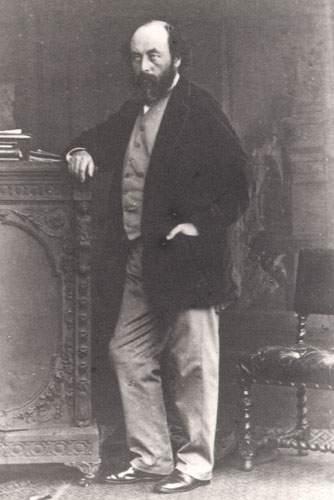Joseph Jukes (Joseph Beete Jukes)

A Sketch of the Physical Structure of Australia … could be considered as Joseph Jukes’ finest or most important contribution to Australian geology. It contained the very first ever complete map of the continent of Australia, imperfect as it was. He designed this map based on a vast collection of notes he had gathered, and his own observations; notes on the structure of the coastline, his own observations during visits to other colonies, and the descriptions of other authors of various other parts of Australia. Having conglomerated these notes, Jukes was able to sketch what he interpreted as the outline of Australian geology. While doing this, Jukes concluded that Australia was the very land of uniformity and monotony, its structure largely unbroken; that mountain ranges and rock formations would monotonously stretch out for miles, without change of characteristics or interruption in formation. He also concluded that, despite apparent consistency in geological formation, Australian soil and land was wealthy in minerals, and he formerly advised the Tasmanian Society in 1846 to conduct further geological surveys in the regions of New South Wales and Van Diemen’s Land, and the importance of such an act. Among other things, Joseph Jukes become known to Sir Paul Edmund de Strzelecki (known commonly as simply “Count Strzelecki”), as well as William Branwhite Clarke, whose conclusions on the palaeozoic age of Australian coal he supported. Jukes’s work provided one of the first insights into the nature of Australian geology, at a time when there was little knowledge of the continent, and when English interest was intensely focused on obtaining the geological knowledge that Jukes was able to uncover.
Joseph Jukes landed in England again in June 1846, and in August received an appointment on the geological survey of Great Britain. The district to which he was first sent was North Wales. In 1847 he commenced the survey of the South Staffordshire coal-field and continued this work during successive years after the close of field-work in Wales. The results were published in his Geology of the South Staffordshire Coal-field (1853; 2nd ed. 1859), a work remarkable for its accuracy and philosophic treatment. In 1849, Jukes was offered the post of geological surveyor of the mineral surveying of New South Wales, back in Australia. However, because of his marriage and other issues, he declined the offer, and the post was given to Samuel Stutchbury. A year later, in 1850, Jukes became the director of an Irish geological survey. He held this post until his death nineteen years later, after a fall from a horse in Dublin. He was buried on 3 August 1869 in St Mary’s churchyard at Selly Oak, Birmingham. For many years he lectured as professor of geology, first at the Royal Dublin Society’s Museum of Irish Industry, and afterwards at the Royal College of Science in Dublin. He was an admirable teacher, and his Student’s Manual was the favoured textbook of British students for many years. During his residence in Ireland he wrote an article On the Mode of Formation of some of the River-valleys in the South of Ireland (Quarterly Journ. Geol. Soc. 1862), and in this now classic essay he first clearly sketched the origin and development of rivers. In later years he devoted much attention to the relations between the Devonian system and the Carboniferous rocks and Old Red Sandstone. Joseph Jukes wrote many papers that were printed in the London and Dublin geological journals and other periodicals. He delivered a popular geological course in geology which attracted almost 400 people in Belfast, Northern Ireland, and encouraged field excursions in the area. This promoted the establishment of the Belfast Naturalists’ Field Club. He edited, and in great measure wrote, forty-two memoirs explanatory of the maps of the south, east and west of Ireland, and prepared a geological map of Ireland on a scale of 8 miles to an inch.
Born
- October, 10, 1811
- United Kingdom
- Summer Hill, Birmingham, England
Died
- July, 29, 1869
- United Kingdom
- Selly Oak, Birmingham
Cause of Death
- accidental fall
Cemetery
- St Mary's Churchyard
- Selly Oak, Birmingham
- United Kingdom


